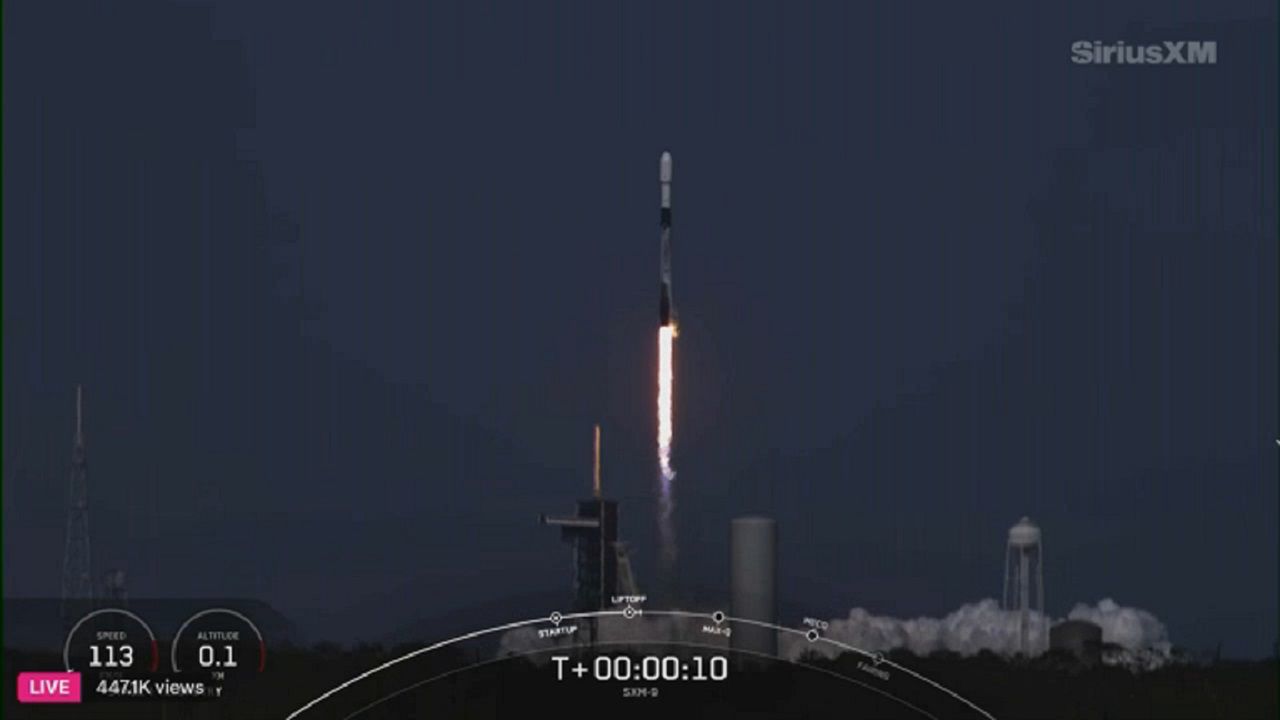KENNEDY SPACE CENTER — For those who enjoy some traveling music as they drive down the Sunshine State's roadways, SpaceX launched a SiriusXM satellite on Thursday morning.
What You Need To Know
- SpaceX's rocket took off from Launch Complex 39A
- The Falcon 9 rocket sent up the SXM-9 mission
Liftoff of SXM-9! pic.twitter.com/buCmhClcFN
— SpaceX (@SpaceX) December 5, 2024
Leaving from Launch Complex 39A at Kennedy Space Center, the company’s Falcon 9 rocket sent the SXM-9 mission to a geosynchronous transfer orbit (just 23,000 miles above our little blue ball), stated SpaceX.
The launch window was 90 minutes long and opened at 11:10 a.m. ET.
The 45th Weather Squadron stated there were no weather concerns for this launch while giving approximately 95% for good liftoff conditions.
If the launch was pushed back, the next attempt would be on Friday at the same time, but the launch window would be two hours long.
Find out more about the weather criteria for a Falcon 9 launch.
Going up
For this Falcon 9’s first-stage booster, called B1076, this will be its 19th mission. It has a long history of launching satellites.
- CRS-26
- OneWeb Flight 16
- Intelsat IS-40e
- Starlink Group 6-1 mission
- Starlink Group 6-3 mission
- Starlink Group 6-6 mission
- Starlink Group 6-14 mission
- Starlink Group 6-21 mission
- SES O3B-mPOWER
- Ovzon-3
- Starlink Group 6-40 mission
- Eutelsat 36D
- Starlink 6-54
- Starlink Group 6-64 mission
- Turksat 6A
- Maxar 2 mission
- Starlink 8-19 mission
- Starlink 6-68 mission
After the stage separation, the first-stage rocket should be landing on the droneship Just Read the Instructions that will be in the Atlantic Ocean. SpaceX posted on X, formerly known as Twitter, that it was this droneship's 100th landing of a first-stage booster.
Falcon 9 landing confirmed, marking the 100th time a first stage booster has landed on the Just Read the Instructions droneship and our 380th successful recovery overall pic.twitter.com/yyoNjHXZfs
— SpaceX (@SpaceX) December 5, 2024

About the mission
The Kennedy Space Center gave the following on the radio satellite:
“SXM-9 is the 10th high-powered, digital, audio radio satellite built by Maxar (SSL) for SiriusXM. … SXM-9 has a large, mesh, unfurlable reflector almost 10 meters in diameter that allows SiriusXM programming to reach its radios, including those in moving vehicles.”
This is SpaceX's third launch for SiriusXM.



